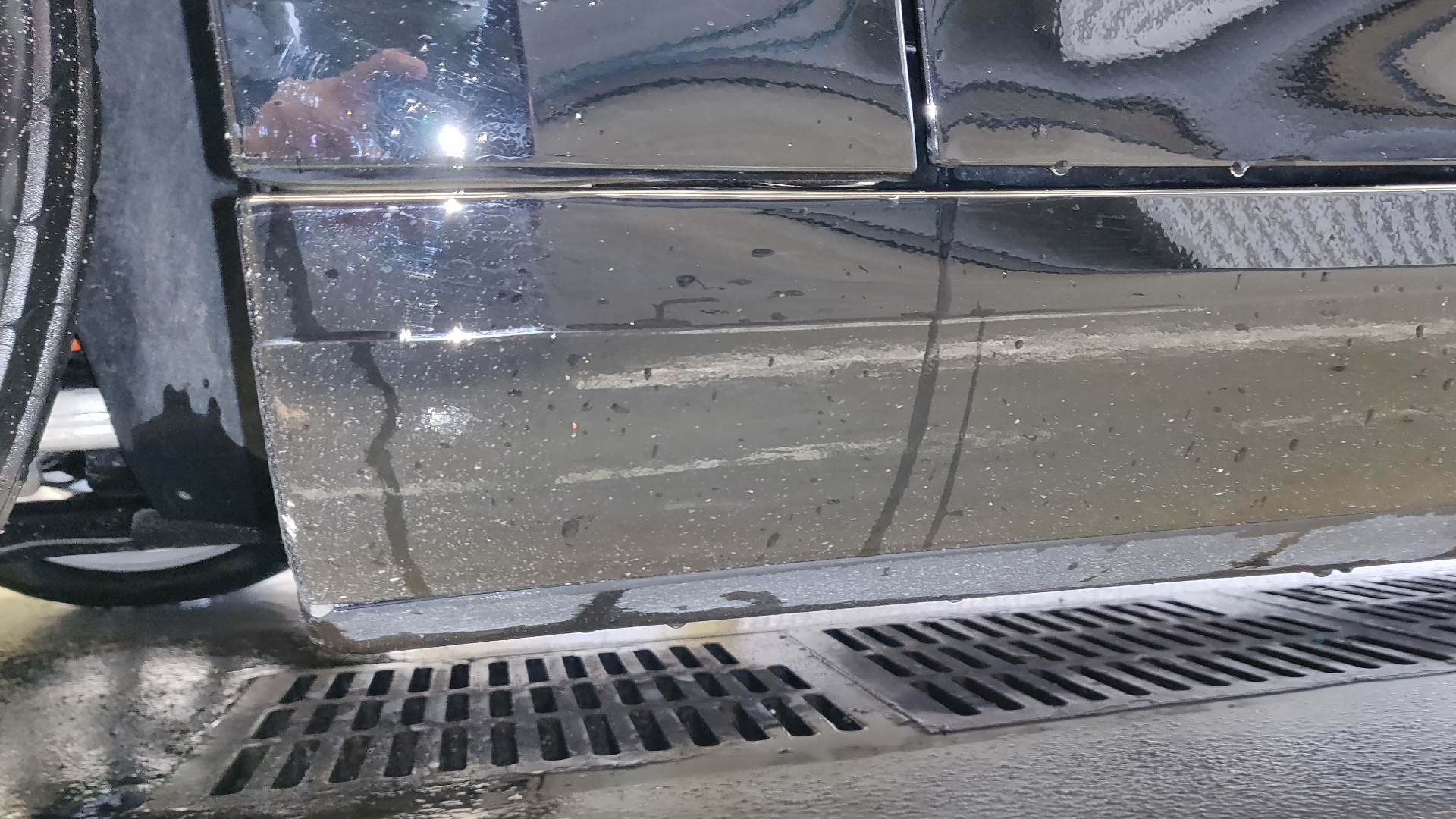

A Finnish condition inspection of a Tesla Model 3’s paint has returned extremely poor readings for both thickness and hardness, validating growing owner concerns about easily-worn paint on the firm’s cars. These results come as Tesla negotiates the settlement of some 19 air quality violations at its Fremont, California factory paint shop, raising questions about the possibility of a connection between those compliance challenges and the thin, soft paint found on Tesla’s cars. Paint issues were one of several factors that contributed to the Model 3 losing its Consumer Reports recommendation this year.
The goods inspection by Finland’s Central Chamber of Commerce was requested by lawyers representing Joni Savolainen, a Finnish Model 3 owner who was dismayed by the level of damage to his car’s paint within just 2,200 km (1,367 miles) of driving. After repeated attempts at bringing the issue to Tesla’s attention yielded no response Savolainen requested a goods inspection, which Finland’s Central Chamber of Commerce describesas “impartial statements on a defect” provided by an authorized expert in order to “prevent disputes from arising and… when negotiations have reached a deadlock.” Both Savolainen and a Canadian owner named Roger-Pierre Gravel are considering legal action against Tesla over weak paint on their Model 3s, an issue that has inspired lengthy forum threads with many reports of prematurely chipped paint and prompted tens of owners around the world to contact Savolainen and Gravel in hopes of coordinating a global response.

The inspection took place in the presence of Savolainen, another disgruntled Finnish Tesla owner, their lawyers and representatives of both Tesla and the local importer. The inspection report [available here in Finnish] noted stone chips on “the rear of the fender arches, the skirtings, the lower parts of the doors and the front… and the rear of the rear wheel arches,” as well as incomplete paint in interior areas around “the front and rear hinges, from the underside of the doors, the A and B pillars” and elsewhere. The report also calls the fitting of doors and hatches “inadequate,” noting that poor fit contributed to paint wearing away from the door openings. The inspector also noted that the way the Model 3’s wheels protrude from the wheel arch, as well as the lack of mudflaps, contributed to the rock chip damage to Savolainen’s car.
Using a standard hardness test known as Wolff-Wilborn pencil scratch test, the inspector rated his Model 3’s paint hardness as “F,” which is several levels softer than the 2H-3H level that is standard for many vehicle brands. In addition to being softer than typical car paint, Savolainen’s Model 3 was also found to have much thinner paint than the standard 110-150 microns, averaging 106 microns but measuring in the low 70 micron range in several areas. In the areas with the most rock chipping, particularly the lower rear flanks of the car, paint thickness was “well below the lower tolerance range given by the manufacturer” according to the inspection report. Though Tesla’s specs were not disclosed, paint on the bottom of the left and right rear doors measured just 72 microns while the bottom of the left and right front doors measured 71 and 74 microns respectively.
The inspector ultimately answered the questions that prompted the inspection in unequivocal terms. On the question of deviations in the thickness, hardness and coverage of the paint he noted [via Google Translate]:
“In my opinion, there were discrepancies in the thickness of the paint on the subject of the inspection because, in my experience, automotive paint of the tested price range has a thickness of 110-150 µm and there are no completely unpainted areas in visible parts of the vehicle, doorways, or other areas. In addition, during my career in the automotive industry, I have not encountered a situation where the amount of rock blast on the sides of a car with this amount of driving and the conditions described. Joni Savolainen said that the car was driven only on permanent pavements. However, this cannot be verified by technical methods…
the total thickness of the paint on the subject’s flanks are extremely thin and the paint film is soft, which is why stone blemishes are more easily formed in these areas than in areas with a thicker paint layer. The thickness of the paint film is determined by the new car in the production process.”
Heikki Nurmela
The inspector noted that a number of measures might be taken to mitigate the damage endured by Savolainen’s Model 3, which resembles that of other owners in Finland and around the world. Mud flaps could reduce the occurrence of rock chips, although the increased air resistance could reduce the range of an electric car which the inspector conceded is an important marketing metric. Using wheels with a bigger offset, as well as protective coatings could also minimize road damage, which he noted is never completely unavoidable on Finland’s roads. Peeling topcoat could have been caused by substances like oil, silicone, grease or wax, the use of an unsuitable adhesive primer, thin paint layers or incorrect drying times during the painting process.
Savolainen tells The Drive that he is disappointed to learn that the paint on his Model 3 is of such poor quality, and that he will continue his efforts to get Tesla to make the situation right.
“Next we make our demands to Tesla Finland, if they don’t contact us first. We demand either a complete refund, a new car or a complete repaint of the current car to an acceptable quality standard. If they are not willing to do anything, we have no other option but to sue them over these defects the vehicle’s paint quality.”
Joni Savolainen